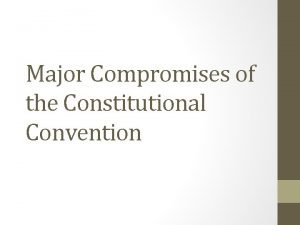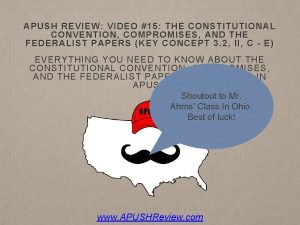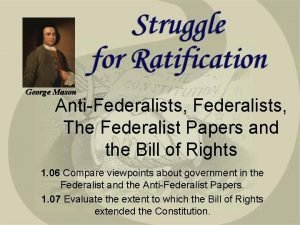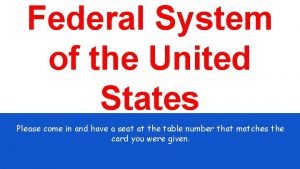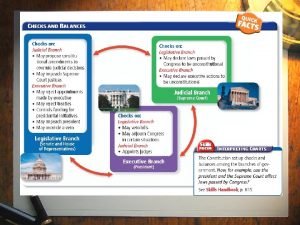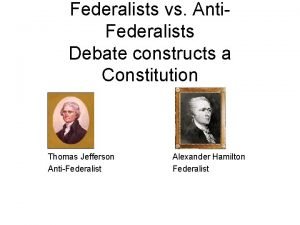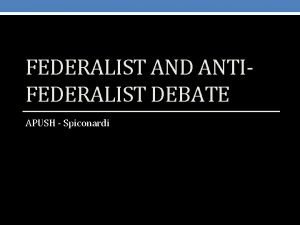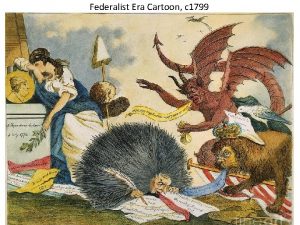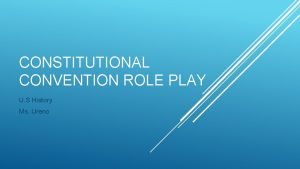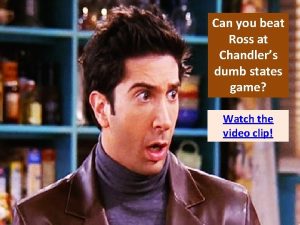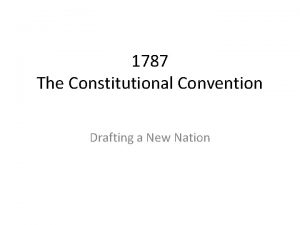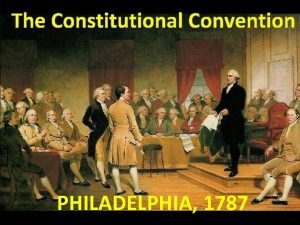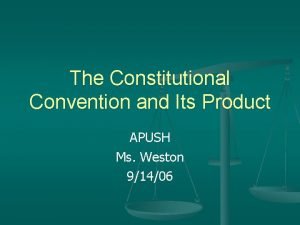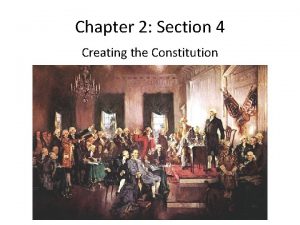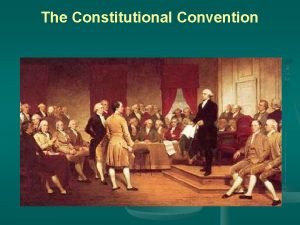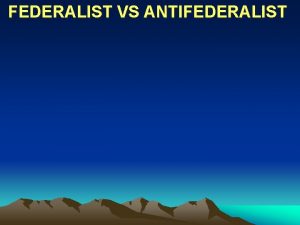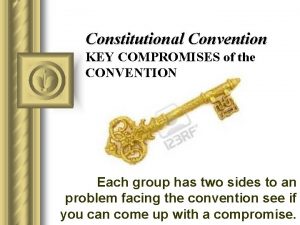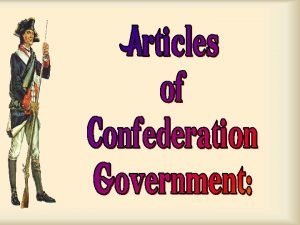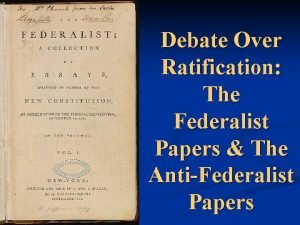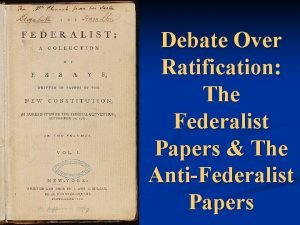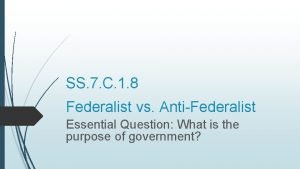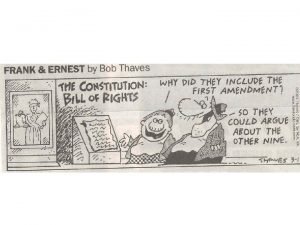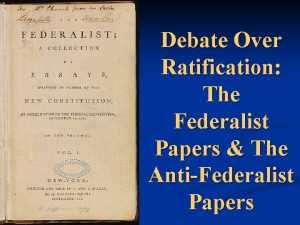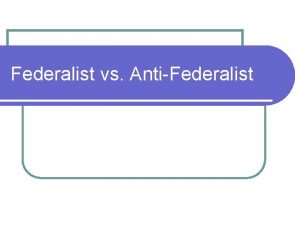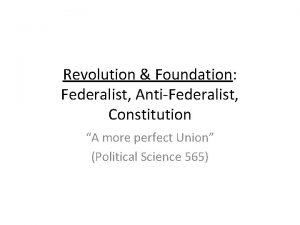Constitutional Convention COMPROMISES FEDERALIST V ANTIFEDERALIST CONSTITUTIONAL CONVENTION




















- Slides: 20

Constitutional Convention COMPROMISES FEDERALIST V. ANTIFEDERALIST

CONSTITUTIONAL CONVENTION • 1787 -Need for stronger federal government • 55 delegates went to Philadelphia Most were educatedlawyers, doctors, military leaders with political experience

CONSTITUTIONAL CONVENTION • Established rules for convention Ø Decisions made with majority vote Ø Discussions were kept secret-delegates were able to speak freely without worrying about public reaction. Ø No formal records of the convention were kept

COMPROMISES How to create the government? The Virginia Plan - three branches of government (executive, judicial, legislative) Bicameral (two house) legislature-both houses would be represented by population The New Jersey Plan- three branches of government Unicameral Legislature- one vote per state

COMPROMISES Compromise: The Great Compromise Three branches of government Bicameral legislature Senate and House of Representative. Equal Representation in the Senate Representation based on population in the House Roger Sherman’s plan

COMPROMISES How to count the population? • Three-Fifths Compromise Ø Debate over how to calculate the population Ø Southerners wanted to count slaves into the total population Ø Northerners opposed the idea Ø Delegates agreed that every 5 slaves were counted as 3 free persons

Three-Fifths Compromise

COMPROMISES • THE COMMERCE AND TRADE COMPROMISE – States agreed that Congress would regulate trade between states as well as with other countries – Congress could not tax exports but could collect taxes – Congress had the right to settle disputes between states – The central government would be responsible for printing all money

COMPROMISES How the president would be elected? • ELECTORAL COLLEGE – Some delegates thought Congress should choose President – Others believed people should vote to decide the presidency – Compromise: a group of people would be named by each state legislature to select the president and vice president

STRUCTURE OF THE CONSTITUTION

CONSTITUTION • “IT’S A PLAN, BUT NOT A STRAITJACKET, FLEXIBLE AND SHORT. ” Harry S. Truman

CONSTITUTION • Framework for the U. S. government • Supreme authority in the nation • Symbol of our nation – System of Government – Beliefs and Ideals – Freedom and Liberty

PREAMBLE • Introduction to the Constitution • Purpose of the Document • VERY clear that the power resides with the people “We the people of the United States…. do ordain and established this Constitution for the United States of America. ” Phttp: //www. school-houserock. com/Prea. html

PREAMBLE • Six Purposes of the Government “ To form a more perfect union” “To establish Justice” “To ensure domestic Tranquility” “To provide for the Common Defense” “To promote the general Welfare” “To secure the Blessings of Liberty to ourselves and our Posterity”

THE ARTICLES • Article I- The Legislative Branch • Article II- The Executive Branch • Article III-The Judicial Branch • Articles IV-VII

AMENDMENTS • Changes to the Constitution • Twenty-Seven Amendments • First Ten Amendments know as the Bill of Rights – Anti-Federalist pushed for the addition of a Bill of Rights

Amendment Process DIFFICULT – Outlines in Article V Proposal Congressional Action 2/3 vote of the members of Congress National Convention Requested by 2/3 of state legislatures

Amendment Process • THREE-FOURTHS (3/4) of states must ratify (approve/pass) the amendment – Vote by the state legislature – Special state convention

Interpreting the Constitution • Written in very GENERAL terms “The Necessary and Proper Clause” Congress has the power to make all Laws which shall be necessary and proper to carry out its duties. Exercise powers not specifically listed IMPLIED POWERS Loose vs. Strict Interpretation

Interpreting the Constitution • Supreme Court has final authority over Constitution • Interpretation through court decision
 Compromises at the constitutional convention
Compromises at the constitutional convention Constitutional compromises
Constitutional compromises George mason federalist or anti federalist
George mason federalist or anti federalist Anti free trade political cartoon
Anti free trade political cartoon Federalist vs anti federalist quiz
Federalist vs anti federalist quiz Federalists and anti-federalists
Federalists and anti-federalists Federalist vs anti federalist apush
Federalist vs anti federalist apush Federalist vs anti federalist cartoon
Federalist vs anti federalist cartoon Antifederalist
Antifederalist Constitutional convention role play
Constitutional convention role play 3/5 compromise cartoon
3/5 compromise cartoon Constitutional convention definition
Constitutional convention definition Constitutional convention article 5
Constitutional convention article 5 Constitutional convention
Constitutional convention Constitutional convention compromise
Constitutional convention compromise Lesson 1 - the constitutional convention
Lesson 1 - the constitutional convention Constitutional convention 1787
Constitutional convention 1787 Constitutional convention apush
Constitutional convention apush Va plan nj plan great compromise
Va plan nj plan great compromise Section 4 creating the constitution
Section 4 creating the constitution Constitutional convention begins
Constitutional convention begins
